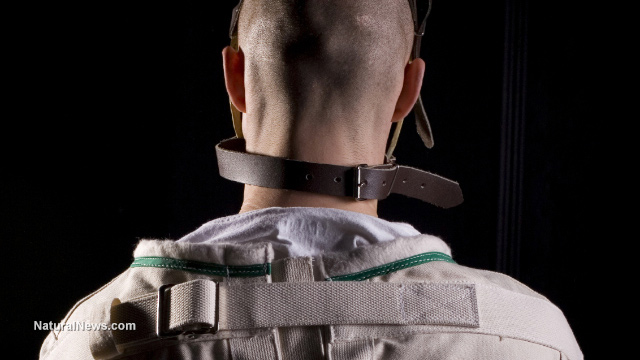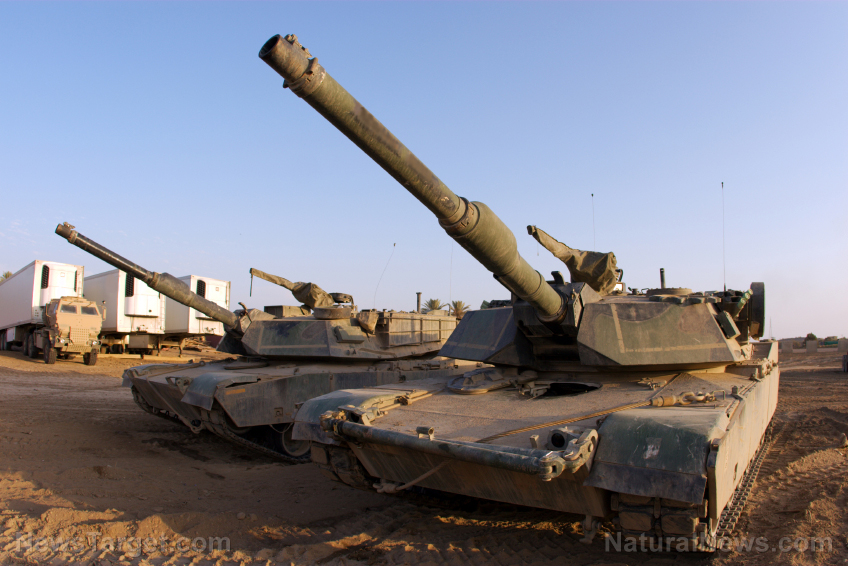 Parler
Parler Gab
Gab
- 81.5 percent of U.K. Met Office stations opened in the last decade meet "junk" Class 4 or 5 standards, with potential temperature errors of 2-5 C.
- New sites like Wales’ Whitesands exhibit poor siting, including placement near roads, sand dunes and infrastructure that distort readings.
- Critics argue biased data fuels exaggerated claims to prop up Net Zero policies.
- Met Office relies on unrealistic RCP8.5 climate models to project extreme warming scenarios.
- Public integrity at risk as mainstream media ignores controversies while social media skeptics gain traction.
The siting scandal: Junk stations and the heat of controversy
Over the past decade, the Met Office has prioritized speed over rigor in expanding its climate monitoring network, with 81.5 percent of new stations rated poorly for accuracy. Since 2023, eight of 13 newly opened sites — such as Whitesands and Neatishead — fail WMO standards designed to ensure representative temperature data. Ray Sanders, who audits all 380 Met sites, observed: “The Whitesands screen is located in a camping area on sand dunes, surrounded by a hedge that traps heat. With a nearby road and no shielding from urban encroachment, this site guarantees artificially elevated temperatures.” The station’s manual logs further complicate reliability, with missing entries for nearly half its first year of operation. Similar anomalies plague airports like Dyce in Aberdeen, where Stevenson screens sit mere feet from aircraft engines. Agricultural polytunnels, solar farms and sub-station proximity further distort data, yet the Met Office defends these locations as valid.Classifying chaos: How standards became slipping sands
WMO classifications categorize stations by their environmental accuracy. Class 1-2 sites (93 percent of WMO networks) avoid artificial heat sources, while Class 4-5 sites allow 2-5 C errors — equivalent to the difference between a mild autumn day and a summer peak. YET:- Class 1-2: A mere 52 of 384 stations (13.7 percent).
- Class 4-5: 298 stations (77.9 percent), with 48 percent in Class 5 — the worst category, akin to placing sensors near blast furnaces.
Historical context and the Net Zero dilemma
The pressure to justify costly climate policies fuels the controversy. When Met Office projections for 2009’s “hottest year” contrasted with personal cold experiences, public skepticism surged. Today, the stakes are higher: Net Zero targets rely on perceived urgency. Critics like Sanders argue: “The Met is weaponizing flawed data to push a narrative that requires constant rising temperatures — to justify taxes, bans and debt.” Matt Ridley’s Telegraph critique underscores the bureau’s reliance on RCP8.5, a UN SSP8.5 scenario painted as “business-as-usual” but rejected even by IPCC. This model assumes 10x more coal use by 2100, enabling 6 C “worst-case” U.K. heat claims. “They choose dystopia because it’s the only way to keep their funding and relevance,” Ridley wrote, calling for “truth, not theatrics.”A call for transparency: Science or spin?
The Met Office’s silence compounds distrust. As legacy media exclusivity for alarmist headlines grows, FOI rejections and declining senior scientist activity fuel conspiracy theories. Meanwhile, global records — like the 2025 St James’s Park 34.7 C — draw suspicion: located near tarmac and in a 4.5 C urban heat island, such sites inflate averages artificially. Sanders urges independent audits: “Prove these sites aren’t designed to corrupt historical records. The public deserves proof — instead, they get evasion.”The temperature of trust
As debates rage over climate policy, the Met Office’s credibility hangs in the balance. By compromising data accuracy and clinging to hyperbolic models, it risks abandoning its meteorological mission for climate activism. With solar minimums reached, temperatures stable for two decades and global budgets strained, the pressure to “hype” warming intensifies. A return to transparent science — one that distinguishes weather trends from policy agendas — is not just good journalism, but a lifeline for democratic decision-making. Sources for this article include: WattsUpWithThat.com DailySceptic.org TheTelegraph.comCorporation for Public Broadcasting to shut down amid Trump’s funding cuts
By Belle Carter // Share
Slovenia becomes first EU nation to impose arms embargo on Israel over Gaza assault
By Laura Harris // Share
Denial of hunger in Gaza: A deepening crisis amid international outcry
By Belle Carter // Share
The new gulag: Mental health detentions and the criminalization of dissent
By News Editors // Share
Governments continue to obscure COVID-19 vaccine data amid rising concerns over excess deaths
By patricklewis // Share
Tech giant Microsoft backs EXTINCTION with its support of carbon capture programs
By ramontomeydw // Share
Germany to resume arms exports to Israel despite repeated ceasefire violations
By isabelle // Share










